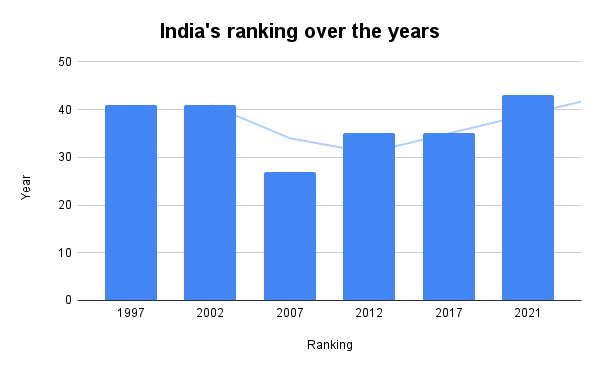Singapore, June 18: The World Competitiveness Ranking is a rankings report released by the IMD (International Institute for Management Development).
An economy consists of:
- Consumers who buy products and services,
- Businesses that employ people and make these goods and services, and
- The government at various levels that buys products, employs people,imposes taxes, and manages trade between countries.
The IMD uses the indicators listed below to measure a country’s economy with another.
1. Economic performance (how well the economy is performing)
2. Government efficiency (how efficient the government is)
3. Business efficiency (how efficient the domestic businesses are)
4. Infrastructure (includes all physical structures needed in a country)
Economic performance includes factors such as real GDP (gross domestic product: the final value of all goods and services in the country), the exchange rate (value of the one currency in terms of other country’s currency), household and government spending on goods and services, the strength of the economic cycles (an economic cycle is a cycle/period of the economy that consists of growth of the economy and contraction of the economy), international trade and investment, employment in the country, and many other factors.
Government efficiency is the policy legislation, tax policies implemented by the government, society framework, and many more factors. Policy legislation refers to how the government is preparing and implementing the laws and policies and the extent to whether they are effective or successful. Society framework refers to the way the society is organized.
Business efficiency consists of factors such as productivity and efficiency, labour, management practices, attitudes and values, and many more factors. Productivity and efficiency refer to how successfully a firm uses all its factors of production (land, labour, capital, and entrepreneurship) to make its goods and services without wasting them. Management practices refers to the ideas and methods managers use to improve the effectiveness of their factors of production to produce a higher quantity of their goods and services.
Infrastructure consists of factors such as:
1. Technological infrastructure (ie. servers, computers, air conditioners, public-private partnerships) 2. Scientific infrastructure (ie. scientific labs, testing centres, Nobel Prizes won, patent grants)
3. Education (ie. total expenditure on education, English proficiency, female literacy rate, number of people graduating with university diplomas)
4. Basic infrastructure (ie. airports, water resources, energy consumption, roads)
With the onset of the pandemic, the economies of many countries were impacted. The strengths andweaknesses of the world’s economies were compared through the World Competitiveness Ranking. In the rankings released this year, India stands at the 43rd position, while Switzerland stands at the first position in the list that consists of 64 nations (the IMD is Swiss).
Amongst the BRICS countries (consisting of five emerging nations: Brazil, Russia, India, China, and South Africa), China ranks first (ranked 16th overall), while India ranks second.
Even though India has been in 43rd place for the last three years, the IMD stated that there has been a significant improvement in the government efficiency factor. Stable public finances (including government spending and the money earned by the government) and the positive feedback they received from the domestic firms in the country for the support and subsidies (a subsidy is the money given to firms in order to encourage them to produce more of the particular goods and services) received from the government were significant contributors to the improvement in the government efficiency factor.
The IMD also stated that the short-term performance of India’s economy would depend on the country’s ability to address the pandemic. According to the report, qualities such as investment in innovation (new idea and methods), digitalisation (the process of converting manual things into digital), welfare benefits (the benefits to people who are not able to support themselves), and leadership qualities have helped countries address the COVID-19 crisis and rank higher in the competitiveness rankings.


